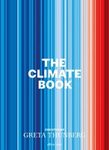![Polar Remote Sensing, Volume 2: Ice Sheets Polar Remote Sensing, Volume 2: Ice Sheets]()
Click to have a closer look
About this book
Contents
Customer reviews
Related titles
About this book
Volume 2 is a companion to Volume 1. It is a comprehensive description of satellite remote sensing applications to all aspects of polar glaciology, including not only ice sheets but also icebergs and interactions between ice sheets and the atmosphere and the ocean. It also includes a chapter on the important new field of satellite synthetic-aperture rader interfermetry. There should be something of interest to most polar researchers and those interested in climate research. As in Volume 1, Volume 2 includes a review of the current state of each discipline, including current questions and issues and related suggestions for research applications of satellite remote sensing. There are many satellite remote sensing texts available, but very few are specifically tailored to, or even contain significant information on the Earth's polar regions. The text is sufficiently comprehensive to summarize fundamental principles of detectors, imaging and geophysical product retrieval, in three dedicated chapters. In effect, the text serves as much as possible as a "one stop shop" for polar remote sensing information. As with Volume 1, the book is extensively referenced, and in an up-to-date fashion. In addition to purely scientific applications, Polar Remote Sensing, Volume 2: Ice Sheets also discusses practical and operational issues, such as how polar satellite data can be obtained and how they can be used in expedition planning and logistics.
Polar Remote Sensing, Volume 2: Ice Sheets is up to date, covering applications of both "heritage" (multi-decadal) remote sensing time series, and new applications from NASA Earth Observing System and similar sensors launched since the year 2000. It also covers future missions.
Contents
- Polar Ice Sheets - Introduction
- Sar Interferometry
- Satellite Remote Sensing of Ice-Sheet Parameters
Customer Reviews
By: Robert Massom(Author), Dan Lubin(Author)
500 pages, 32 colour & 78 b/w illustrations
"Mapping the properties of Earth's polar ice sheets may be remote sensing's greatest success story. [...] The main source of confidence in this quest is the strength of polar remote sensing. This book provides an excellent reference and review and contains many of the best recent scientific illustrations and graphics from other publication. Any reader with a scientific interest in the Earth will be frankly astounded at the level of detail now accessible via satellite foe some of Earth's most remote regions."
- Ted A. Scambos, Journal of Geology, Vol. 116, 2008














































